Dec 13 Feature – Chris Daniels and the Colorado Music Hall of Fame Inductees
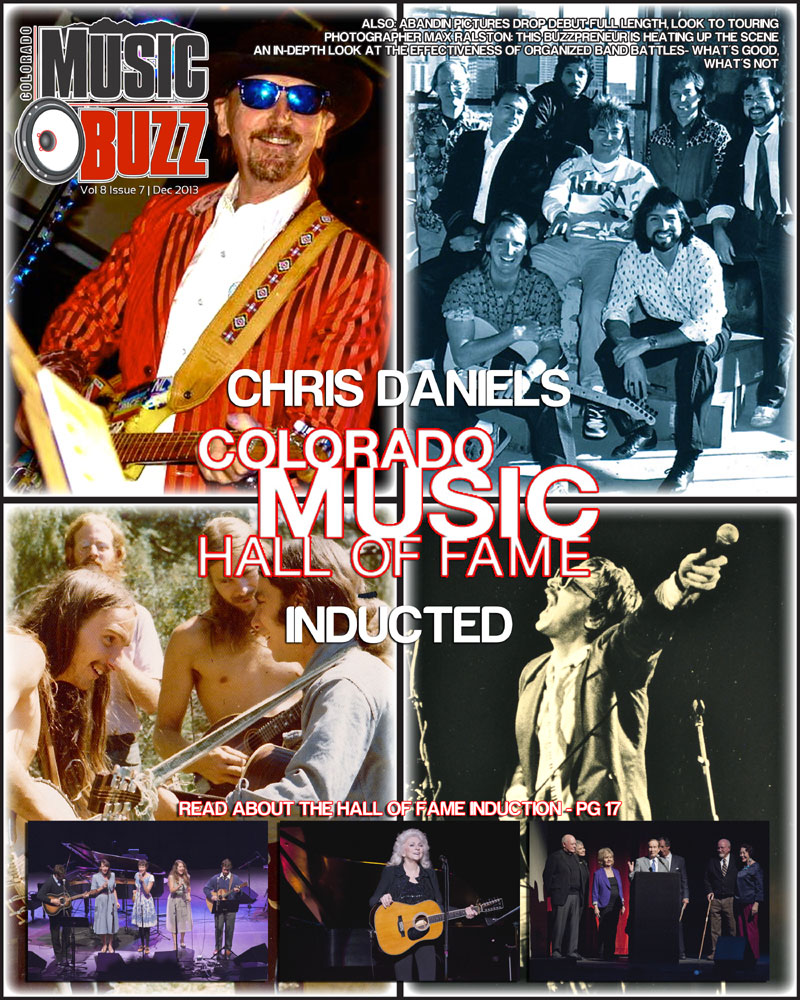
Chris Daniels- The Groove That Holds the Whole Thing Together
Interview part 1:
CMB: When you first heard about being inducted into the Colorado Music Hall of Fame, what went through your mind once you got over the initial “Yeah Hoo!” moment?
CD: It made me think about two things. First it made me think about the extent of my career and how lucky I am to have a career in the music business that has spanned 43 years. The second one is my place in the pantheon of people who will be there, where will I fit in? Where I fit in is as a really successful working musician, not a rock star, but a bandleader who made the most out of every opportunity to get to a larger audience.
CMB: What is the secret spice that has kept the band Chris Daniels & the Kings around and working for 30 years?
CD: It’s two basic things: Keeping the group of people you work with informed about what you’re doing. It is old-fashioned leadership skills. Ask them what do they want to do? Here’s our plan for the summer, does this seem good to you? And secondly, paying people as best as you can. You can’t always pay them great but as long as you pay them equally and evenly. If we play a gig that is $700 and there are seven of us, everyone gets a hundred bucks, that’s what keeps people around, honesty.
On the other hand what keeps our band together is that we have to reinvent ourselves. We’ve never been plagued by having one hit that defined us as, “This song, this genre is who we have to be.” So we’ve been able to explore musically. If you go back and look at our 15 records and say choose one like In Your Face, it was basically heavy metal with horns. Then turn to a record like Louis Louis – you’re listening to a record that was a tribute to Jump Blues and Swing. The Spark was very acoustic, very singer songwriter. We also did a collection of cover tunes called Stealing The Covers and it is all these fantastic, big horn band R&B tunes. We’ve had the freedom to reinvent ourselves and I think our fans dig the variety.
CMB: What do you feel is the draw for your new fans as well as those that have been going to your shows for decades?
CD: It’s really funny – when we started out in Colorado years and years ago, there were no horn bands in Colorado, so we were breaking new, bold ground. We were looking back at Blood Sweat and Tears, Chicago, and especially looking back at a Stacks Records group Booker T and the MG’s that backed Otis Redding, and all of these amazing people. Now there are probably 15 maybe 18 horn bands, and still new fans come around and say, “I’ve never heard your music, I really love it!” Which I kind of have to laugh after playing for 30 years, but when a new fan comes and says something after a show like, “It’s amazing you guys play real horns, it’s not synthesizers!” That’s what they like about us.
CMB: In looking at how your career evolving from the Folk style jam band of Magic Music to the Rock and Roll Rhythm and Blues of Chris Daniels & The Kings, how and why did that transition occur?
CD: Well, this is a short answer to a very long story. With Magic Music I was a teenager and then in my 20’s, it was a time period, it was a communal band. We all lived on a commune together. We played music living together – living in the same house the way 20 year olds do. At the end of that six-year run I didn’t know anything about music. I didn’t have any formal training, could barely read written music, and knew very little about theory and all that. I had just been an ear player, and I wanted to learn more. My uncle David Daniels whom I really respected said, “You need to learn, you need to go to school.” He was a famous actor on Broadway, and more importantly he was right. I agreed, so I went back to school, and I did four years of college in three years and graduated cum laude. Then I returned to Colorado. When I came back I embraced the electric guitar. I started to look at great electric guitar players who played rhythm guitar. Rhythm guitar is a whole intricate skill in and of itself, it is different the lead guitar player who is out there with the flash and all the attention. Great rhythm guitar players are like Jimmy Nolan who played with James Brown’s band. And if you listen to it, he is the groove. He makes the whole groove happen. Bob Weir with the Grateful Dead is one of the best rhythm guitar players in the world. This was what I decided I wanted to explore, so I worked with the band Spoons and I toured with Russell Smith. At the same time I was still developing as an acoustic guitar player. New Grass Revival was backing me at Telluride Bluegrass, and at the end of the night I put down my acoustic guitar, and I started the After Hour Jams (now the Nightgrass Concerts) where we all pulled out our electric instruments including Bela’s first electric banjo. It was so much fun that I held on to my yellow Fender Stratocaster and really got into developing that rhythm guitar skill and then added horns in 1984. When I was sick and in the hospital and couldn’t play, that was the thing my band noticed. They said they were struggling to start and stop songs without my cues, because my guitar playing was the groove that held the whole thing together.
CMB: Being such an incredible bandleader, and front man for the band, is that a natural talent or something key you learned along the way?
CD: (Laughing) No, that’s a great question. No, I didn’t really know how to be a bandleader. I just wanted to play music and I knew if I didn’t step up, nobody else would. So, I sort of jumped into the position. I’ve never considered myself to be a great singer, though a lot of people tell me that I have a great voice. I don’t have a voice that sounds like anybody else’s. I can list up to five different new bands right now and it is very hard to tell the difference because the singers all sound the same. But I have a weird voice you know. Look at Eddie Vedder, he never sings a consonant and you can’t tell what he’s singing. I’m the opposite … hard consonants. I have a very different kind of voice, and part of it was discovering what that voice was – and part of it was getting confident in it. A movie called The Last Waltz did that for me. I was an unconfident singer until I saw Rick Danko sing “Stage Fright.” I saw that and thought if he can do that I can. It was from singing that I started developing a presence on stage, and now it’s a whole creature that comes out. Randy Newman had a great line, “It takes a whole lot of medicine for me to pretend that I am somebody else.” That’s the thing, all of a sudden you are somebody else, I have a person that lives inside of me that walks on stage and says “Hey Everybody” and you know you’re going to have a show. I stole my line from Sam Bush, “Howdy music lovers!” because that’s who they are. They are people who left their computers, and their twitter, and all of their crap and Facebook at home, and they came out to hear live music. What magic is that! So that’s what I do, I address them and say “Hey music lovers” and there’s this whole persona that comes out, I dread the day if it doesn’t because I’d be back to being scared as shit.
CMB: You’re kind enough during your music performances to make sure everybody gets a chance to shine, and you also have a conversation with your audience as opposed to the band playing a list of songs to the audience. How do you make that happen?
CD: I’ve been criticized for it. Somebody gave me a lot of grief about introducing the solos. The reason I do that is that these aren’t my background players. There’s an old joke about what’s the difference between Lawrence Welk and a Moose? With Lawrence Welk the asshole is in front and the horns are in the back. (giggle) I didn’t ever want to be that, I never wanted to be that star guy that everybody is focused on; it’s a group effort. The Rolling Stones are probably the way I look at it. Every single one of those people is a huge individual, yeah Mick prances around and there ain’t no other Mick, but Keith Richards, Charlie Watts all those guys are just as much a part of The Stones. For our band, not everybody knows that’s Bones Jones playing lead guitar, and I want them to know – and that he played with the great Albert King. When I introduce him his fans light up, it’s like YEAH!! And Doody ( Darryl Abrahamson) or Randy (Amens) or Bro (Kevin Lege) (who’s been with the band 25 years) have their own fans, and they’re the same way.
CMB: You also take your time to interact with the crowd, talk to them, engage them and most bands don’t know how to do that one key element. How did you figure that out?
CD: Weirdly enough that came out of American history, and my Master’s Degree. I studied music history and I understood where those songs came from. Rather than saying, “This was a song I wrote about when I was…” which is pretty boring stuff, what I realized was there was a story there. Sometimes it can be one sentence long, it can be, “I am going to take you back to 1938 when this was Rock and Roll!” and then play our version of “In the Mood.” It’s like teeing up the ball in golf, you’re setting up this thing and if you do it well and with intent – it gives the audience a wonderful sense of cool understanding. They start to see there is something behind the songs other than just a bunch of musicians on stage. When I do it wrong I get, “Oh shut up and play.” (laughing) It’s a balance, it’s a fine line and I never get it totally right.
What I try to do every night when I am on stage is I try to do something a little bit better, sing a note better, do a solo better, tell a story better, do a segue better, and that’s my goal.
CMB: Some things seem to be coming full circle with you’re being inducted into The Colorado Music Hall of Fame and being inducted with Folk Music. Can you share a bit about the Magic Music project you are doing now?
CD: In 2011 we did a Magic Music reunion at Swallow Hill and afterward I said, “Come on, let’s all go into the studio, we’re all sitting here in Colorado.” So we went to Coupe Studios and started recording. We recorded what eventually became 15 tracks. I live in and out of studios, they’re not problematic for me, but for a group of musicians that aren’t used to current studio technology, it was a tough start. We got some tracks that day and then I recorded the rest of the album’s rhythm tracks to a click so the rhythm was solid. I did all my banjo, mandolin and vocal parts and I sent them out to the other guys in Magic Music on the East coast. I said put in your parts and send them back. They said, “No, now it’s our turn to play around.” Tim Goodman started producing this record and he was with Southern Pacific and signed to Columbia Records for his own solo record. He’s a really good producer. So, he laughed and said he was going to work on all the parts. He has pushed us hard, and we’ve all stepped up. It’s turned into the first multi track Magic Music record. Everything we had from back in those days was all two-track. What is so exciting for me is that I am back to playing banjo, back to playing mandolin, back to some songs that I loved that were epics, there are 12 minute long songs about a Cossacks in Russia. It sounds a little strange but it’s actually pretty amazing. It’s kind of like Pink Floyd’s The Wall but it’s done acoustically. It’s exciting to see this project develop, and it should come out next year. I imagine we’ll even perform it a bunch of times, and we are all looking forward to trying out on stage again.
It’s great to go back to the acoustic stuff, it’s kind of what I started with “Better Days.” My son Cedar wanted me to do an acoustic record before I croaked, and that was what started the “Better Days” project and album.
CMB: You have another project in the works as well that is about to go to the studio.
CD: Yeah with Freddi Gowdy from the old Freddi Henchi Band. Freddi has one of my favorite voices; he is a true Soul singer. If you listen to the great Soul music of the mid to late 60’s of the Otis Reddings, the Wilson Pickets, the Johnny Taylors, (one of my favorites), it’s really amazing stuff. Recently people have rediscovered it. It was kind of led by a tragic figure, Amy Winehouse, but there’s a whole lot of others who have come along, most recently a wonderfully dweeby looking guy named Alan Stone who writes these great songs and he’s really singing this great Funk, Soul music. I’ve just always wanted to drill down on that, and now with Freddi’s voice and my voice kind of doing a Sam and Dave thing. I am hoping to get into the studio this winter where we can put a lot of that together.
CMB: Do you have anything to say about or to the Colorado Music Hall of Fame?
CD: Well God, it’s an amazing honor to be inducted into a place where Dan Fogleberg, and The Lumineers, Hot Rize, Dianne Reeves, and Ron Miles will be. All of these icons, of course Hazel Miller, Big Head Todd, Firefall, those folks will be in that Hall of Fame too, and to be included in that remarkable ring of talent, Wow! What can I say? The Colorado Music Hall of Fame is just getting started; they finally have a permanent home for it. A lot of states do this. Louisiana has got an amazing music hall of fame. Colorado has this incredible heritage of music, and I really credit G. Brown, and Chuck Morris and all of those folks with thinking, “Let’s not call it the Rock Hall of Fame, or the Red Rocks Hall of Fame,” but they called it, “ The Colorado MUSIC Hall of Fame.” It means a multi-Grammy winner like Diane Reeves – who lives over in Park Hill and is probably one of the best Jazz singers ever to grace the planet will be there with Harry Tuft. This gives us a place to be recognized, and be there for future generations to go, ”Wow I wonder what Chris Daniels music was like?” and they can hop on i-tunes or whatever the i-tunes of 2075 is and they can go, “Whoa horn band music, I wonder if we can find a saxophone in 2075? Nobody’s doing that.” I think it’s a pretty cool concept.
CMB: Do you have any last words?
CD: Oh boy, last words, I try and avoid that. (laughs) Yeah, I want to say something to the Music Buzz. The Music Buzz has been kind enough to let me do a column for the last couple of years called “The Manager’s Corner” and I have to say a huge thanks because I’ve received a lot of great comments from young musicians who were inspired and helped by what I’ve written. They’ve said, “Hey thanks for writing about this issue…” I write about what’s happening with the music business – what I teach at CU Denver. The Music Buzz has givig me an outlet to write about the controversial stuff that’s going on in the music business as well as the good stuff, so truly, “Thanks Music Buzz for letting me get the column out there!”
CMB: Chris Daniels is an obvious choice for the Colorado Music Hall of Fame. He has dedicated his life to music as a player, student, teacher, advocate, mentor, and friend. His phone rings constantly friends playing him songs over the phone, people booking the band, students needing more time or mercy. His phone was ringing with somebody asking him to play for a cause, or borrowing bits of his PA system. He did his best to accommodate everyone. His old dog Sonya was snoring at his feet the whole time we were talking. For a man who is so highly educated, and accomplished, he is incredibly down to earth in his Levi’s, old flannel jacket, and fedora.
Congratulations Chris!
Interviewed by Torch
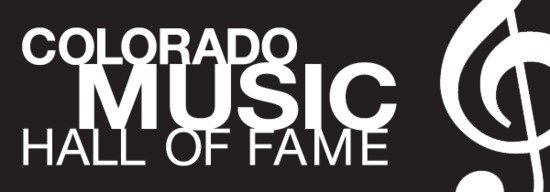
Colorado Hall of Fame Part two:
The Colorado Music Hall of Fame Inducts Another Class of Stars
by Torch
The date was November 8, the location the Paramount Theater, and it was the perfect place for the induction of this class of Colorado Music Hall of Fame inductees. The theme was the Folk scene of the 1950’-60s. The head of the class was Judy Collins, followed by Chris Daniels, Bob Lind, and The Serendipity Singers. The evening started with swanky VIP party where the inductees mingled with the onslaught of press, family, friends, and all the local music business powerhouses. The food was elegant, the drinks expensive and Hall of Fame displays the focus of interest, only second to the stars. Each inductee had a display with various artifacts from their careers, items such as: albums, photos, clothing, guitars, billboard listings, news articles, and even booking calendars.
The Colorado Music Hall of Fame is the brain child of Chuck Morris supported by the board of directors: Chuck Morris– President and CEO, AEG Live Rocky Mountains, G. Brown– Director, Colorado Music Hall of Fame, Lew Turner– Director of Business & Strategic Partnerships, Carson J. Spencer Foundation, Jeffrey Azoff–Agent, Creative Artists Agency, Kathie Broyles– Adjunct Instructor and Advisory Board Member, ATLAS Institute at the University of Colorado, Jay Elowski– Owner, Pasta Jay’s Restaurants, Paul Epstein–Owner,Twist and Shout, Brad Farber-Attorney, Brownstein Hyatt Farber Schreck, Aaron Friedman– Finance Manager, AEG Live Rocky Mountains, Mark Hartley– Co-President, The Fitzgerald Hartley Co., Kathryn Keller– Realtor,RE/MAX of Boulder, George W. Krieger– D.D.S. Colorado music historian, Phil Lobel– Publicist, Lobeline Communications, David McReynolds– President,Columbine Health Plan, Dave Plati– Associate Athletic Director/Sports Information, University of Colorado Athletic Department, Devon Taylor– Creative Director, Given Goods, Scott Tobias– President and COO, Village Voice Media, Craig Umbaugh– Attorney, Hogan & Hartson. Whew that was some roll call!
But wait there’s more, the inductees so far include: Red Rocks, John Denver, Harry Tuft, Barry Fey, KIMN Radio, Flash Cadillac, Sugarloaf, and The Astronauts, Judy Collins, Chris Daniels, Bob Lind, and The Serendipity Singers. Future inductees as of now are: Dan Fogelberg, Joe Walsh & Barnstorm, Caribou Ranch, Dean Reed, Band Box Records, and Gary Stites.
The evening’s concert started amid the classic theater with the long flowing velvet curtains, golden accents that reflect a warm candle light feeling, and the seats were full with anticipation and fans. Freddi Gowdy introduced Chris Daniels who gave away credit to everyone else as per his usual humble self. He thanked G. Brown, and Chuck Morris, talked about Judy Collins’ music, and The Dips (Serendipity Singers) then mentioned, “I am so proud to be here with Bob Lind, I think many of us lost our virginity listening to Bob Lind in the back of a Dodge Polaris.” The audience laughed with guilty knowledge. Chris did make a point of saying, “None of us stands here without the musicians we work with; no one stands up here alone. And I want to thank The Kings who have toured with me for 30 years. It was supposed to be a one night gig, so be careful of one night stands, they can last a lifetime.” (more laughs) The members of Magic Music deemed, “the first neo-hippie jam band” by G. came out on stage accompanied by Ernie Martinez, local phenom in his own right. Then for the second song The Kings hit the stage and they did the full horn rocking song ‘When The Sun Shines All the Time’. The crowd got into singing along and everyone on stage was having a grand time.
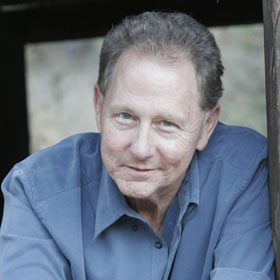
Bob Lind
Bob Lind was the next inductee. He was introduced by Al Chapman, renowned Santa Fe Artist and former club owner of The Analyst, who gave many early Colorado Folk artists their start on stage. Bob Lind was to be inducted, primarily for his song, ‘Elusive Butterfly’, a song over 200 artists have covered, including Eric Clapton, Cher, Aretha Franklin and so on. He is currently working as a writer, which showed in his poignant speech. He talked about living in a crummy apartment on Downing St. and being a musician living the strange hours that they do, and being generally inspired to write in twilight or dawn. He said sitting there as a young singer songwriter he had no idea where a song would take him. He also gave credit to the music business in general as being a place where you can be inducted into a hall of fame, but can get in your car and keep on going with your career unlike most sports figures who end their careers in a hall of fame. He released a new album in 2012, Finding You Again, and played the song, Thunder of Good-bye, after a lovely acoustic version of Elusive Butterfly, the way it was conceived so many years ago.
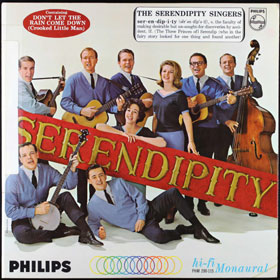
Serendipity album cover
Steve Farber introduced the Serendipity Singers. Five members of the group attended the concert. They did not perform as they were unable to rehearse. The performance was a collaboration of Paper Bird’s Esme, and Gen Patterson, along with Sar and Mark Anderson Plud Tyler Despres. They performed two songs in the sweet Serendipity style.
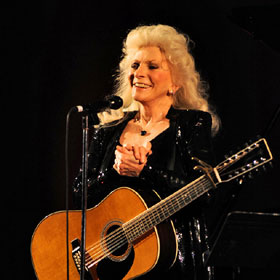
Judy Collins
Harry Tuft who was inducted in 2012, introduced Judy Collins. She was a graduate from East High School. In her interview with Kurt Montgomery of 9-News she said, “This kind of gathering celebrates the fact that some of us grew up here, and a lot of us have sung here for decades, and some of my fondest memories are of singing at Red Rocks, and the club I started at in Boulder in 1959, Michael’s Pub. It was very special to me.” She played a full two hours accompanied by a piano, and she played guitar. Judy is now 74 years old and her distinct voice that marked a time with her characteristic operatic Folk style, was as strong and as it has ever been. She was stunning! The crowd sang, laughed, cried, remembered, and applauded.
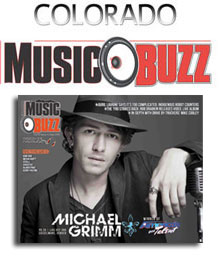


Recent Comments…